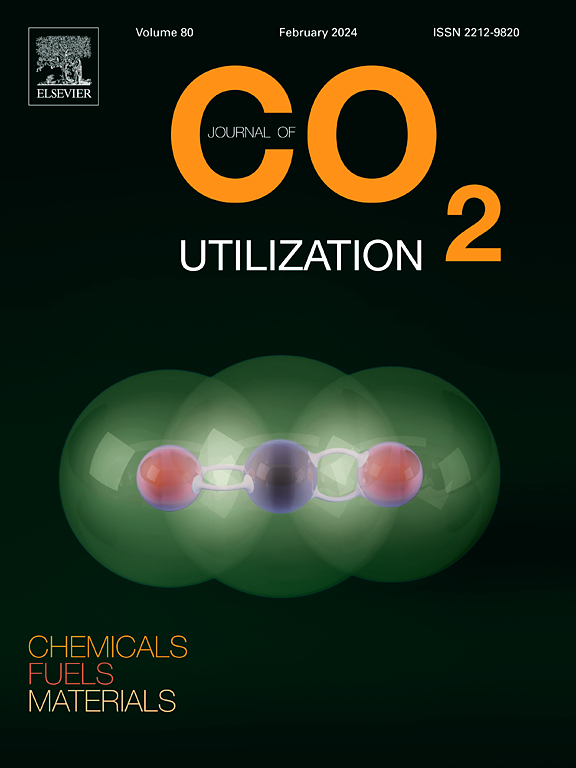动态操作对熔融碳酸盐电解生产固碳的影响
IF 8.4
2区 工程技术
Q1 CHEMISTRY, MULTIDISCIPLINARY
引用次数: 0
摘要
电流密度的动态运行对金属沉积和合成气CO2电解有积极影响,但对水电解效率有消极影响。以钛为阴极,镍为阳极,研究了不同波形的外加动态电流密度对熔融Li2CO3中CO2电解过程的影响。研究了五种电流波形:三角形、方形、正弦、上升和下降。三角形波形可获得最高的法拉第效率(FE),最高可达51.5%,而斜降波形可获得最低的固体碳生产比电能消耗(SEC),为25.9 kW h kg−1。利用x射线衍射(XRD)、拉曼光谱(Raman)、扫描电子显微镜(SEM)、能量色散光谱(EDS)和x射线荧光(XRF)研究了每种波形下固体碳产物的特征。不同的电流波形对产品的形貌影响最小,通常导致球形洋葱形状,具有一小部分管状结构。镍、氧化镍和氧化钛与碳一起被发现,这表明金属的释放不能被动态电流密度阻止。本研究揭示了不同电流波形在CO2电解过程中的应用,揭示了不同的FE和SEC值,但对固体碳产物形貌的影响有限。本文章由计算机程序翻译,如有差异,请以英文原文为准。

Influence of dynamic operation on solid carbon production by molten carbonate electrolysis
The dynamic operation of current density positively impacts metal deposition and CO2 electrolysis for syngas production but negatively affects water electrolysis efficiency. This paper investigates the influence of applied dynamic current density with various waveforms during CO2 electrolysis in molten Li2CO3, using a titanium cathode and a nickel anode. Five current waveforms are studied: triangular, square, sine, ramp-up, and ramp-down. The triangular waveform achieves the highest Faraday efficiency (FE), up to 51.5%, and the ramp-down waveform obtains the lowest specific electrical energy consumption (SEC) of 25.9 kW h kg−1 for solid carbon production. The characteristics of solid carbon products for each waveform are investigated using x-ray diffraction (XRD), Raman, scanning electron microscopy (SEM), energy dispersive spectroscopy (EDS), and x-ray fluorescence (XRF). The different current waveforms have a minimal effect on the morphology of the product, generally resulting in a spherical onion shape, with a small fraction of tubular structures. Nickel, nickel oxide, and titanium oxide are found along with carbon, indicating that metal release cannot be prevented by dynamic current density. This study provides insights into the application of different current waveforms during CO2 electrolysis, revealing different values for FE and SEC, but limited effect on the morphology of solid carbon products.
求助全文
通过发布文献求助,成功后即可免费获取论文全文。
去求助
来源期刊

Journal of CO2 Utilization
CHEMISTRY, MULTIDISCIPLINARY-ENGINEERING, CHEMICAL
CiteScore
13.90
自引率
10.40%
发文量
406
审稿时长
2.8 months
期刊介绍:
The Journal of CO2 Utilization offers a single, multi-disciplinary, scholarly platform for the exchange of novel research in the field of CO2 re-use for scientists and engineers in chemicals, fuels and materials.
The emphasis is on the dissemination of leading-edge research from basic science to the development of new processes, technologies and applications.
The Journal of CO2 Utilization publishes original peer-reviewed research papers, reviews, and short communications, including experimental and theoretical work, and analytical models and simulations.
 求助内容:
求助内容: 应助结果提醒方式:
应助结果提醒方式:


